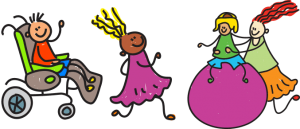Many parents feel frustrated and very anxious about making the right treatment choices for their children. I am therefore writing a blog series to share some information with you on some of the treatment approaches I use within my private practice.
What treatment approaches are available to help my child with Cerebral Palsy improve their motor function?
This list below shows some of the treatment approaches available to your child. Your physiotherapist will work alongside the wider healthcare team of doctors and therapists. They will help you decide which treatment approaches may be suitable for your child.
This is not an exclusive list of treatments.
Physiotherapy Specific Interventions:
- Neurodevelopmental Treatment
- Goal directed strength / functional training (GDT)
- Active and passive sustained stretching
- Aquatic Therapy
- Early Intervention (EI) and Home Exercise Programme (HEP) – These are not specific treatment techniques though an essential approach.
- Mobility devices and equipment (specialised seating and standing frames)
Therapy and Medical Treatment interventions:
The interventions below are often carried out with a team of healthcare professionals such as physiotherapists, orthotists, orthopaedic consultants, occupational therapists, neurologists and paediatric consultants.
- Optimal Segmental Kinematic Alignment Approach to Rehabilitation (OSKAR) – Orthotics / Leg splints
- Lycra
- Serial casting
- Constraint-Induced Movement Therapy (CIMT)
- Single Event Multilevel Surgery (SEMLS)
- Botulinum Toxin Injections and or tone modulation medication
- Neurosurgical (Selective Dorsal Rhizotomy / Deep Brain Stimulation / Intrathecal Baclofen Therapy)
I have not discussed Complementary and alternative therapies for cerebral palsy in this series of blogs.
Below is a brief overview of active and passive sustained stretching which I use in conjunction with other therapeutic interventions when treating children with Cerebral Palsy.
I will focus on muscles in the lower limbs (legs) within this blog. Though children often need stretches for the upper limbs (arms) too.
What is the difference between active and passive sustained stretching?
Active stretching is when there is no external force being provided to a muscle. Active stretching is the best type of stretching especially if it is incorporated into everyday activities. Children with Cerebral Palsy will often use orthotics and or mobility aids to help their walking pattern which in turn will help them achieve an active stretch of important muscles with each step they take.
Passive sustained stretch is especially important to help maintain muscle length. Evidence has shown us that short interval repetitive stretching does not work. I advocate for sustained stretching for children with cerebral palsy.
How do I identify what muscles need stretching?
Every child with CP is unique and different. It is important that your physiotherapist helps you and your child to identify what muscles are short or at risk of shortening and how to incorporate a programme of active and passive sustained stretching into your child’s daily life. Some of the stretches I teach I incorporate into activities of daily living e.g. stretching while brushing your teeth.
Muscles that are commonly short in the lower limbs (legs) tend to be:
- Hip flexors (muscles at the front of the hip)
- Hamstrings (muscles at the back of the thigh)
- Quadriceps (muscles at the front of the thigh)
- Calf muscles
Active Stretching for children with CP who walk independently or with mobility aids:
There is no better way to stretch a muscle than doing it through every step you take! We know active stretching is also the best way to stretch and it does not require a timely exercise programme.
How can I achieve active stretching of the muscles in my child’s legs with every step I take?
Most independent walkers and walkers who use mobility aids such as rollators, walkers and sticks / crutches can achieve active stretching of their leg muscles with the right orthotic support and mobility aids.
My advice is to ensure that your child’s gait (walking) has been thoroughly assessed by a highly specialised physiotherapist with clinical expertise in CP gait and orthotic management. They are likely to use a video gait analysis app and carry out a clinical assessment. Videoing your gait from the front, back and sides in barefoot walking as well as walking in shoes, orthotics and mobility aids will give the physiotherapist lots of information.
Your physiotherapist may advise the following:
- Further assessment with an orthotist (expert orthotist in CP)
- Orthotics and or adapted footwear (review existing or prescribe new)
- Mobility aid review
- Review with an orthopaedic / neurology team
Optimising your child’s walking will help your muscles stretch with every step. You may need orthotics (which may include adapted footwear) and or mobility aids to ensure that you are walking in the best way possible.
Optimising walking will protect your child’s bones, muscles, joints and ligaments. It is important we protect our children’s bones and soft tissues as they grow. As we know musculoskeletal pain can develop in children and adults which can massively effects quality of life.
Take Home message
- Active stretching is the best way to stretch muscles. Ensure your child’s walking pattern is optimised to provide the best active stretching.
- Optimising your gait (walking) with orthotics, adapted footwear and mobility aids will ensure your bones and muscles are looked after.
How do I carry out a passively sustained stretch of my leg muscles that are short or at risk of shortening?
- Consult your physiotherapist to help you identify the muscle groups that require stretching.
- Do not over stretch, you should not be in pain. Your physiotherapist will help you and your child understand the difference between over stretching and the right amount of stretch.
- I would recommend Incorporating the passive sustained stretching programme into your life and aim to do this 5 times a week.
- Your physiotherapist will show you exactly how to do the stretch on your child. They may also give your child stretches they can do on their own, ideally while they are carrying out everyday activities.
- The physiotherapist will explain why it is important to stretch each muscle and take a baseline measure of each muscle. Repeating this measure at regular intervals as your child grows is important.
- You and or your child will be advised on how long to hold each stretch. Typically, this will be for a minute or so at first then progressed to several minutes which constitutes it as a sustained stretch.
Top Tip
Write down all your questions about the different therapy approaches you are considering and discuss these with your physiotherapist and medical team. Some will not be suitable for your child and your team can explain why. Some will require a special assessment with a team that have expertise with that procedure / treatment.
Cerebral Palsy is the most common childhood movement disorder in the UK. There are lots of treatments options available for your child. And lots of ongoing research to investigate the benefits of these treatment options.
Contact us for an informal chat to ask any questions specific to your child. We have physiotherapists who are specialists working with children with Cerebral Palsy able to travel to Surrey, Sussex, Kent, Hampshire and parts of London – https://wanderlusttherapyforkids.com/contact/



